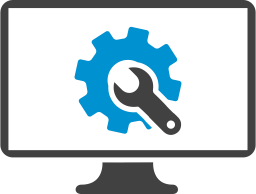Blog: Applications
LIMS Configuration or Customization. Part 2 - How Do You Tell the Difference?
5th April 2018

This is a three part series. Part 1 discussed the differences between customization and configuration, this part 2 discusses how you can between them, while part 3 discusses the value of configuration tools.
In Part 1 of this blog we discussed the main differences between customization and configuration of a LIMS. A LIMS must be flexible enough to support the different needs and working practices of individual laboratories. Although most LIMS are described as ‘configurable’, there are two very different approaches to achieving the final system – true configuration and customization. True configuration means creating a solution that meets the needs of the user by manipulating the functional objects within the system without changing any standard underlying code. Customization, on the other hand, is the implementation of user-defined working practice by changing the standard code provided by the vendor with the system, or creating new code from scratch. The differences between these two approaches were discussed in more detail in Part 1.
The implications of customization and configuration
Choosing between a LIMS that needs to be customized or a LIMS that can be configured can have a number of implications for the user. In the first instance, any LIMS that is customized will almost certainly need the customization to be performed by the suppliers’ programming team. It may be possible that it could be performed by the user’s own IT department, but it is very unlikely that the vendor will assume any responsibility for the support of the customer created code. Clearly there is a cost associated with the supplier having to rewrite the code. In addition however, not only may rewriting the code require the overall system to be revalidated, but any future changes are also likely to require further rewriting of the code. By contrast, LIMS that can be truly configured, such as Matrix Gemini, allow the creation of specific screens and workflows that meet specific needs without having to write or modify any computer code. Since the underlying code remains unchanged, there is no need to revalidate the system with the associated time penalties or costs. Although the cost of configuring the system by the supplier will be built in to the initial purchase price, true configuration can be carried out by users themselves should they want to do it since no specialist programming knowledge is required. In this case Autoscribe would support any customer created configurations or configuration changes. Equally important is the future-proofing offered by true configurability – the system can easily be changed in line with changes in the need of the laboratory. Clearly there is a significant difference between true configuration and customization. But how can you tell if the LIMS you use or one that you are considering purchasing is, or is going to be, customized?
Configured or customized? - Telling the difference
Many suppliers might use the term ‘configuration’ when their system really uses a customized approach, so here are some key ways of telling the difference:
- Does the supplier refer to their technical consultants as programmers?
- Do they refer to their ‘configuration tool’ as being like C, C#, Visual Basic or some other programming language?
- If you ask if you can do the configuration yourselves do they say yes - if you have someone who understands computer programming?
- Does the vendor support customer created configurations?
- When you ask for standard functionality to be changed do they talk about ‘programming in’ the modification?
- When standard functionality is changed is the original program copied, renamed and then worked on to prevent future upgrades overwriting your changes?
- Are upgrades to your system time consuming and expensive, requiring rework of your changes?
- Is your LIMS outdated and not fully supporting your workflows because your specific functionality cannot be upgraded?
When new functionality is created for your system does the supplier start with a blank program file and start writing computer code? If the answer to one or more of these is yes, then you have a system that has been customized, no matter how much the supplier talks about configuration.
Summary
Understanding the difference between customization and configuration and the implications of either approach is vital when making the decision of what LIMS to implement. Choosing a route that involves customization, even if it is described as configuration will have implications for the supportability and longevity of the system. Choosing a system that supports true configuration, which is so much more than just turning switches and flags on and off, will help ensure the long-term supportability of the system, protect the investment and ensure that the LIMS can evolve as the needs evolve.
Part 3 discusses the value of configuration tools to configure your LIMS.